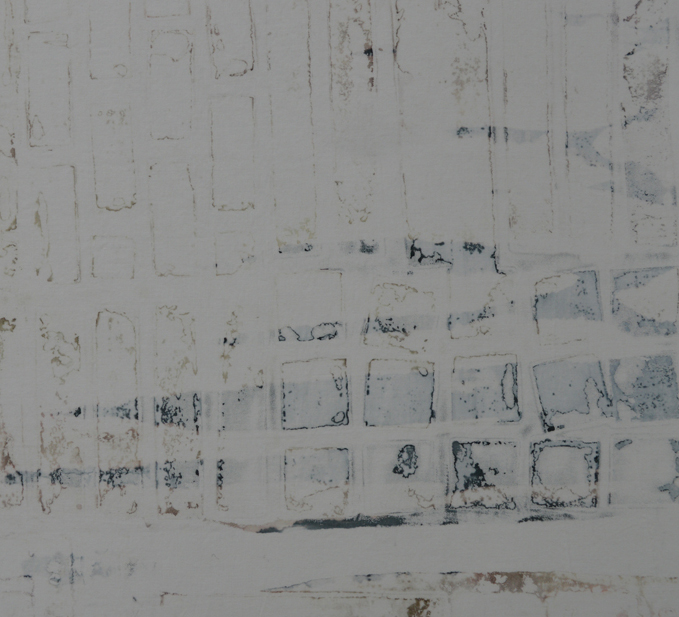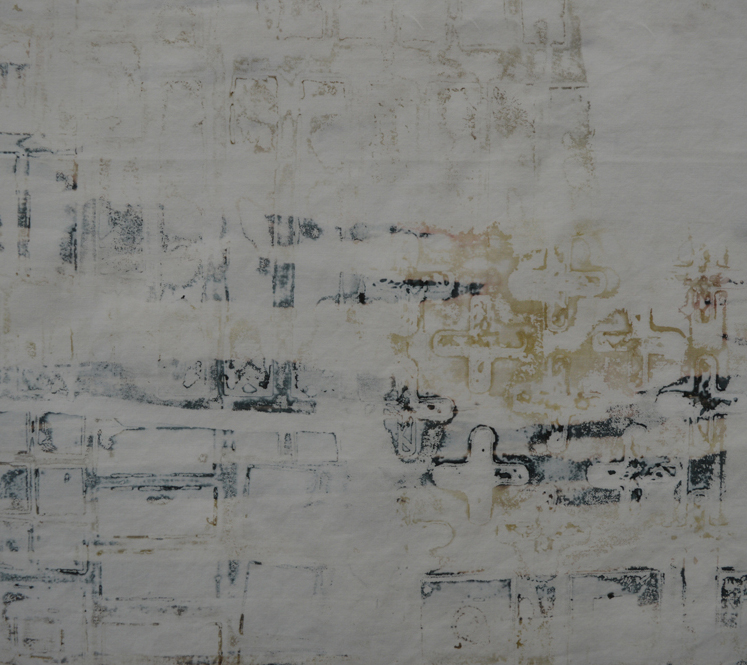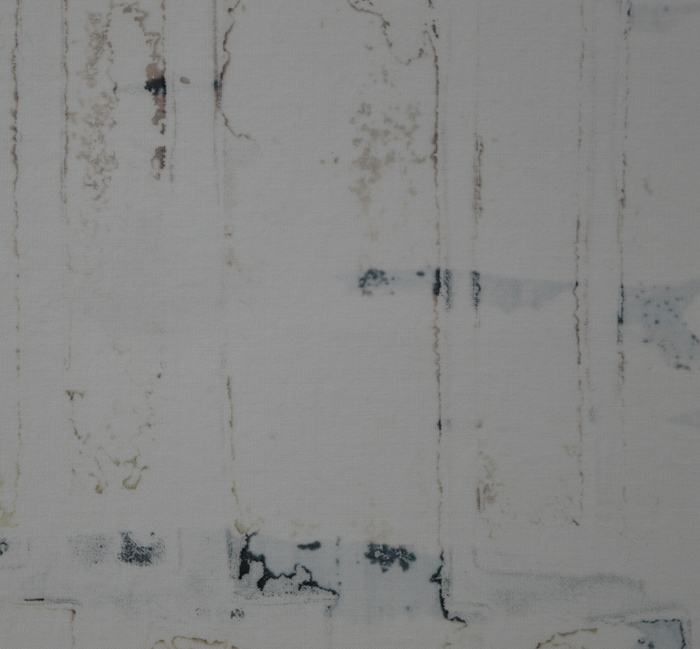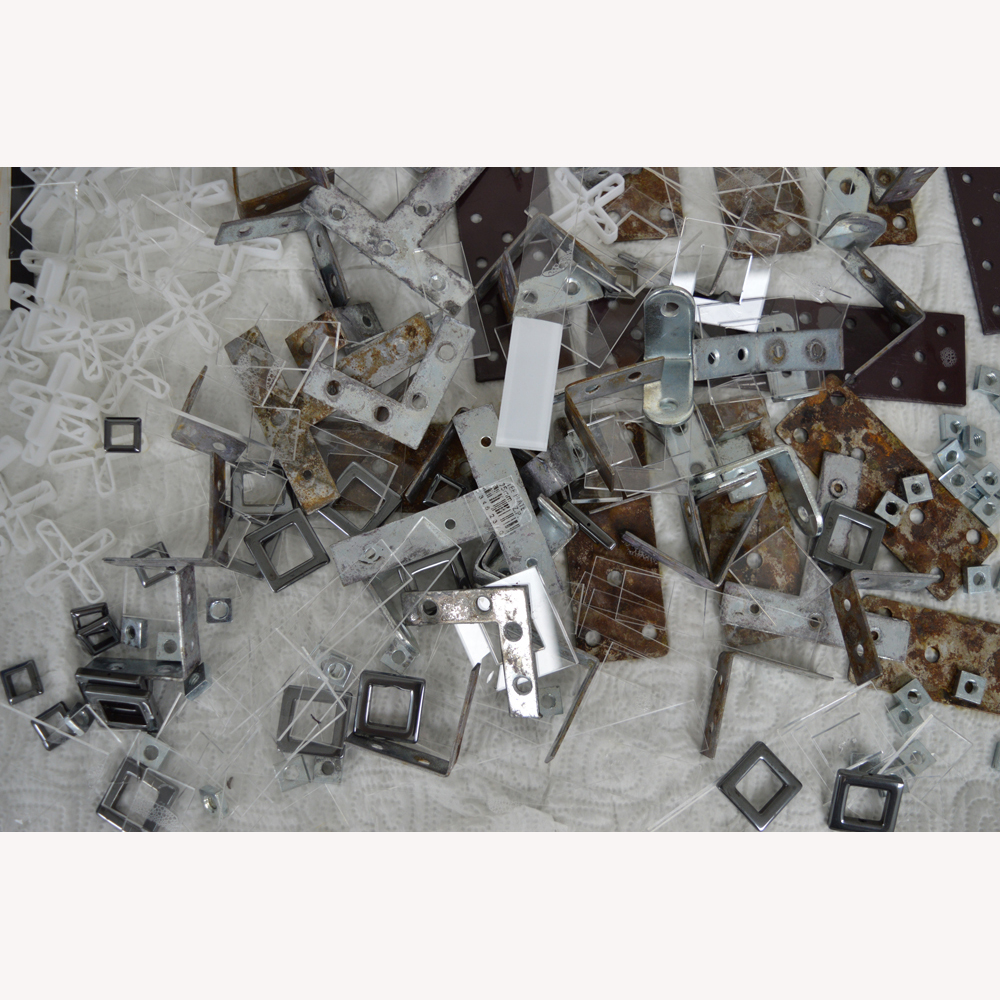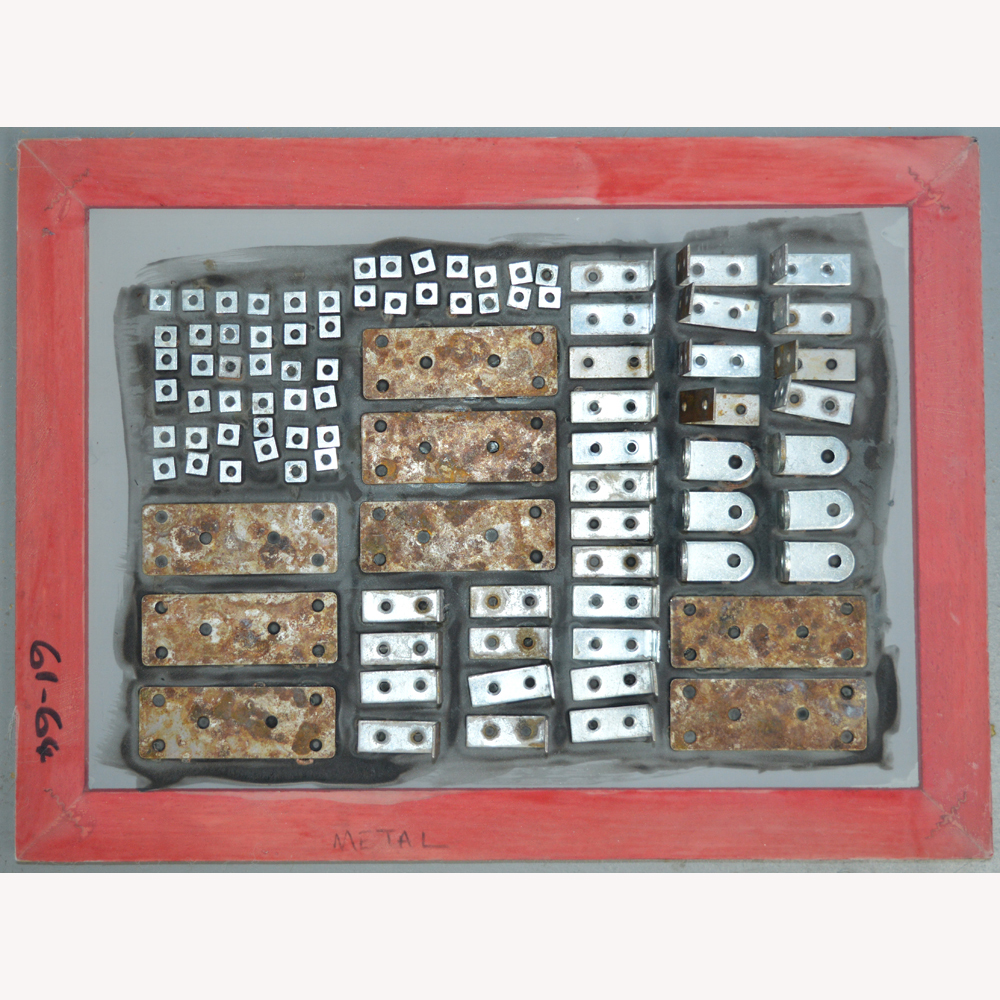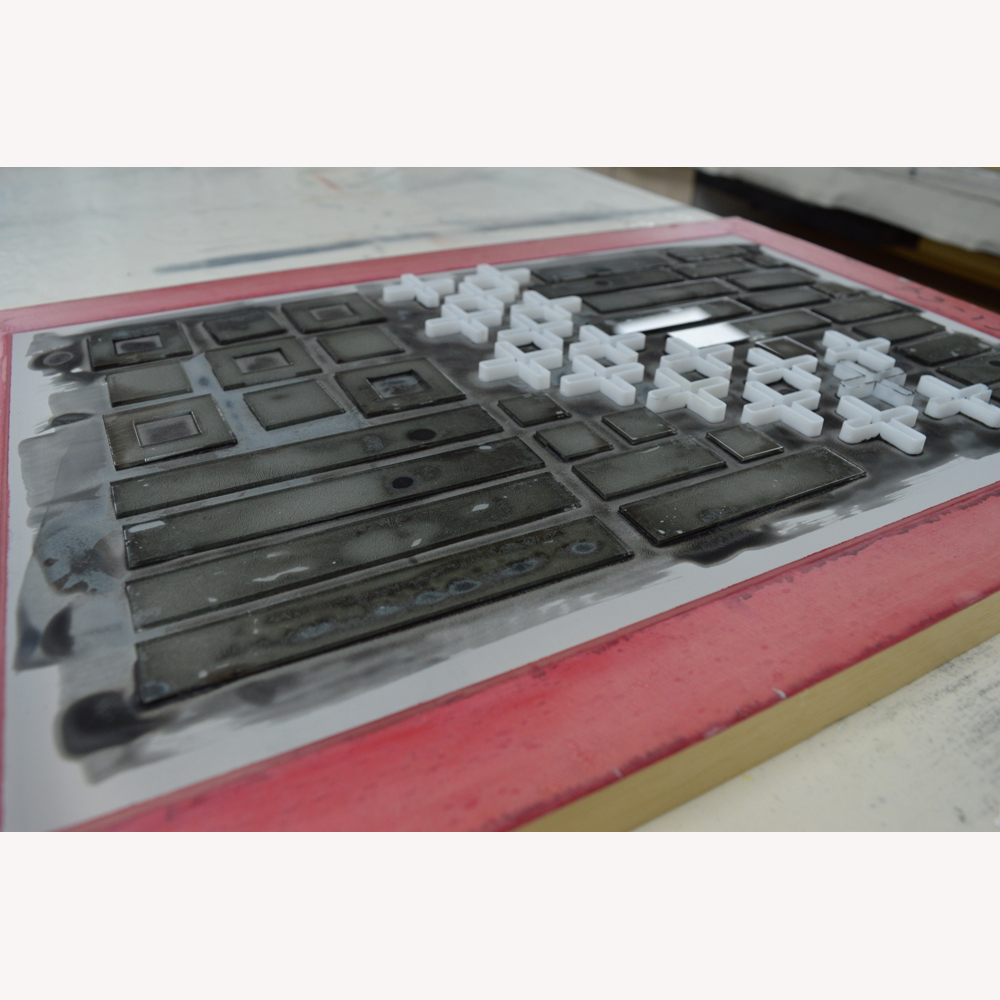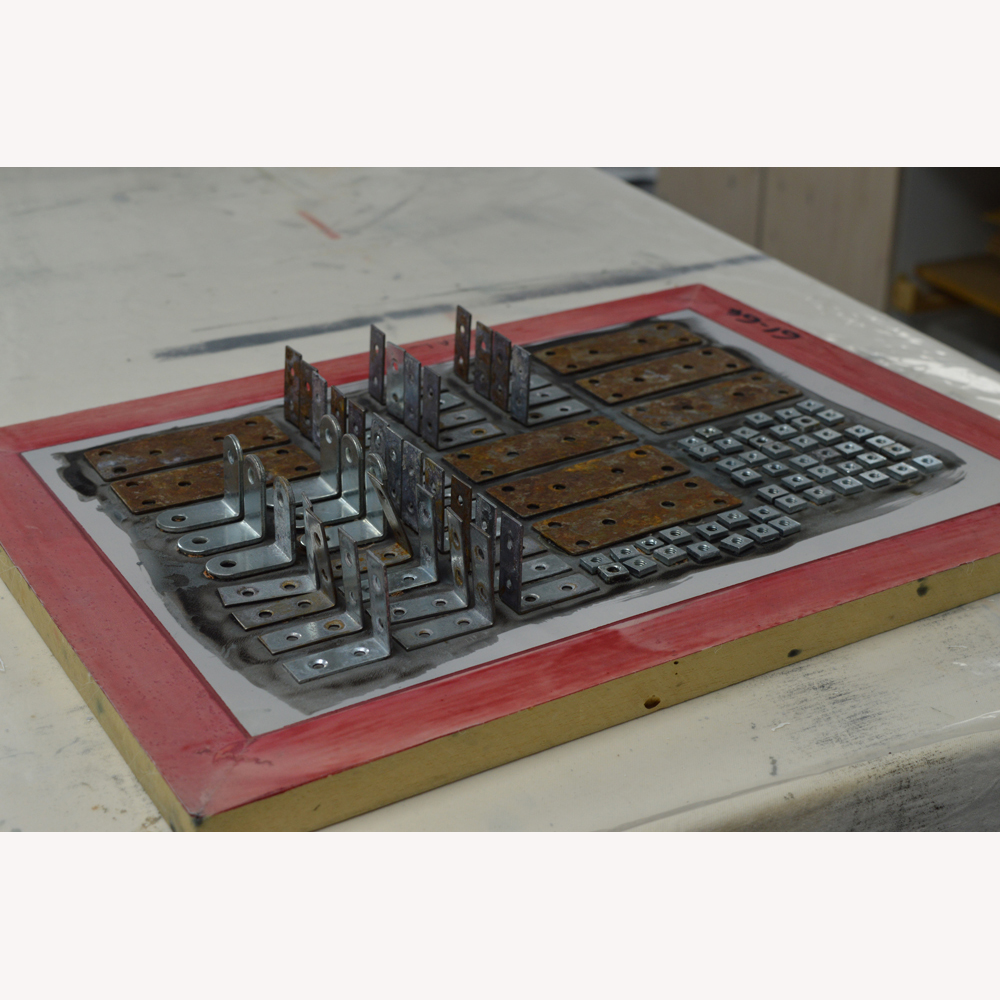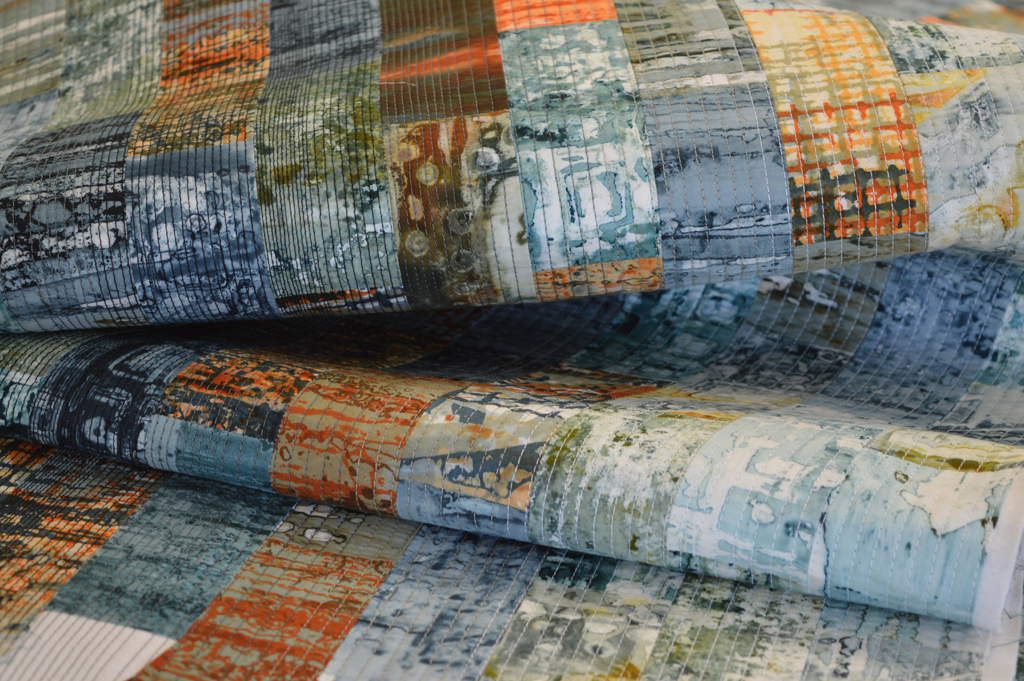Three weeks to go until my exhibition with Helen Conway at The World of Glass in St Helens and another first for me - prints. In an effort to make my art more affordable I'm going to be selling limited edition prints of two of my new works (Sherdley Road and Ruins 8) along with limited edition prints of two detail shots. The prints are A3 and I'm really happy with the quality of the image (you can see all the stitching and fine detail) and the lovely heavy paper they are printed on. I'll be making them, along with postcards, available on my website from the 17th March when the exhibition opens. After much deliberation I have priced the prints at £55 each. Postcards will be £1 each. Time will tell if this is one of my better ideas!
I have had a good life. Fortunate to have enjoyed the benefit of a first class education without crippling student debt. Fortunate to have brought our first house when my husband and I were just out of university. Fortunate to have been able to buy a larger house as our three kids got bigger. Fortunate that our house is big enough that our oldest son and grandson can live with us and still feel like they have their own space; their own lives.
Which is just as well as our son, a single parent on a low income, cannot afford the £750 per month he would need to rent a small 2 bed terraced house in Salford. And he is not alone. The charity Shelter estimates that 150 families become homeless every day in Britain. 150. A day. In what is still one of the richest countries in the world. I hope I won't offend anyone when I say that we should be ashamed of ourselves.
Homeless doesn't just affect those who struggle with mental health issues or those with substance abuse problems. It isn't a lifestyle choice. It can affect anyone. The break-up of a relationship, a landlord selling up, redundancy, spiralling debt when wages don't keep up with inflation. It doesn't take much and the problem is getting worse. The charity estimates that there are 128,000 children in the UK today who are homeless.
I have a good life. I have the time, money and space to make art. That is why I will be giving 15% of sale proceeds from my upcoming exhibition at The World of Glass in St Helens to Shelter. And, for the duration of the exhibition (17th March to 4th May 2018) I will also donate 15% of any sales from my website to the charity.
In aid of Shelter: Registered charity number 263710
I'm slowly working down my pre-exhibition to do list and am now the proud owner of postcards and display stands. I ordered my postcards from Moo. I have used them for business cards and love the quality of their products. This time around I was disappointed with some of the postcards - the images of my very pale 'Traces' pieces came out dark and dull. Not to worry though. The kind people at Moo have given me lessons on using the right colour profile (CMYK) and are going to reprint them. Great customer service!
Well maybe that is a little bit dramatic but it is now only 44 days until my exhibition with Helen Conway opens at The World of Glass in St Helens. And only 37 days until we drop off the art work. Today Helen and I met with the curator Hannah to discuss layout and the minutia of things we need to do between now and then.
Getting the layout of the exhibition finalised is really important. Hannah and her team will hang the work and we wanted to be sure that we have the right number of pieces to fill this beautiful space. Turns out we can include an extra 4 metres of wall without crowding the space. Good job I made more pieces than I thought I needed. It does however mean that I will need to correct the scaled 3D model I have made!
So my to do list for the next 37 days:
- Send out the remaining Preview Invites.
- Finish final quilt (the original piece was finished in December but I liked it so much that I submitted it to the European Quilt Triennial. So now I am making a replacement. A 135cm x 240cm replacement. Good job I work in series!).
- Cut, drill and label top and bottom battens for three large quilts.
- Make storage bags for each large quilt.
- Iron, de-lint and carefully roll three large quilts in tissue paper before storing in their bags.
- Add hanging mechanism and mirror plates to 20 small pieces stretched over canvas.
- Wrap these 20 pieces in bubble wrap, find a box to store them in and print out a hanging plan for them.
- Decide whether 6 medium sized pieces currently stretched over canvas would actually look better framed (OK so maybe I should of thought of this earlier!)
- Add hanging mechanism and mirror plates to said 6 pieces.
- Wrap them in bubble wrap and print out a hanging plan for them.
- Collect 8 framed pieces from Manchester Custom Framing.
- These will come with hanging mechanisms and will be carefully wrapped so will just need a hanging plan printing.
- Make labels for everything. Sounds simple, takes forever to get them perfect.
- Get postcards printed ready for sale in the gallery.
- Decide whether to have limited edition prints for sale and get them printed.
- Get poster printed onto foam board for entrance to gallery (Helen is organising the design).
- Organise something for visitors to leave their details and comments on.
- Sort out drinks and nibbles for the preview with Helen.
- Decide what I will wear (this is the item that stresses me out most!).
Easy!
In my last post I shared the breakdown printing technique I use to put colour and texture onto my cloth. This series of work is inspired by industrial structures that once littered our landscape but now rarely exist outside of memories and museums. Their impact on the landscape has faded; has been built over. So for my cloth, having put down a layer of colour, I now strip most of that colour back off. Here is how.
Using a steam iron I crumple and crease my fabric. I am trying to create an uneven surface that acts as a resist to the discharge solution. I use Formosol dissolved in warm water and apply with a 'dry' brush. I don't want to flood the cloth. I leave the cloth to dry overnight then use a steam iron to activate the Formosol and remove colour. This bit is rather noxious. Ideally you should use a gas mask but I find ironing near an open door with a stiff breeze is effective. I use the iron as a tool, selectively applying heat so that I get different levels of discharge. The 'black' dye I used to print the cloth is actually a blend of a blue-black dye and a dark brown dye. When I discharge the colour strips away to leave a yellowish brown that rather looks like a nicotine stain.
Once I'm happy with the level of discharge I wash my fabrics at 60C and they are ready to use. Or not. Sometimes I over-do the discharge process and end up with a piece of fabric that is too pale. Sometimes the colour discharges to more of a red brown. In both cases I resist the temptation to throw them in the bin. Instead I add another layer of breakdown printing and another layer of discharge.
Some people get nervous about sharing their process / techniques. I don't. Mostly because I use methods that do not give exact, reproducible results. Every screen I pull is different. Although years of experience do direct my work it is the serendipitous nature of breakdown printing that makes each piece of fabric unique.
Over the last few weeks I have been printing fabrics for a series of work inspired by those industrial structures that no longer really exist - brick kilns, pit winding wheels for example. I have been printing in one colour - grey - but some of the fabrics have picked up traces of rust from some of the metal objects I use to make my screens. I start by adding a small amount of thickened dye to the back of a screen. I spread the dye using brushes, foam brushes or rollers but leave the coverage rather uneven.
I then use my wonderful collection of 'things' to embed into the dye. I keep some screens specifically for use with metal brackets, buttons etc as over the years they have got rather rusty.
I use different size screens but in the winter, when the screens have to dry indoors, I make sure to only use a thin layer of thickened dye and to use small screens. I would rather clean and make up more screens than pull a screen where the dye has flowed into blobs before drying. Fellow breakdown printers will know what I mean!
Once the screens are completely dry I take off the embedded objects. And yes, I wash them every time. Sometimes I print the screen as is. Other times I use torn masking tape to create wells around the screen. Using torn masking tape breaks up the edge of each print. Having pinned my white, soda soaked fabric to my print bench I print the screen using thickened paste. As I want pale, delicate marks I tend to dump out unused paste if it picks up dye from the screen and replace with fresh paste.
I aim to apply different patterns / textures across the cloth so don't have to worry about composition. Using multiple screens means that I don't get too much pattern repeat. I let the fabric become touch dry before rolling up in plastic and leaving overnight to fix the dye. The fabrics are then washed and dried ready for the next process.
I often use this time of year to finish those things that I have kept putting off. In my day job that might be writing a stack of reports or clearing out filling cabinets. In the studio it is adding sleeves and labels to finished pieces and making bags to store them in. I love every other process that makes up my art. I love washing screens, I love sewing in ends and I love sewing down facings. Adding labels and sleeves and making bags - nope. But it needs doing and it gives me the opportunity to reflect on the year and think about the year ahead.
2017 has been a quiet 'art' year for me especially compared to 2016. The year has been spent mostly making work for the two exhibitions I have with Helen Conway in 2018 so I haven't really had much new work available to enter as many 'Calls for Entry' as I did in 2016. I was disappointed that a new piece, Liverpool Street Salford wasn't selected for Fine Art Quilt Masters in the summer as it would have been really neat to be selected three years in a row. But I was absolutely thrilled that an older piece, Ruins 1, was accepted into Quilt-Art-Quilt in Auburn, New York. I was even more thrilled when it won Best in Show and was sold. I have two other pieces exhibiting this year. Ruins 7 is touring with Quilt Nation and Happy Today? is touring with SAQA Layered Voices. Both pieces were made and selected in 2016 but opened in 2017. But that is all. A quiet year.
Behind the scenes however I have been busy. The stats for 2017; 1053 hours in the studio in 2017 compared to 964 hours in 2016. That means an average of 20.25 hours per week compared to 18.5 hours a week. During that time I have finished 21.58 square metres of art compared to 18.87 square metres in 2016. Go Leah! In 2016 I made 9 'major' pieces and a couple of small pieces. In 2017 however I knew that I needed to make more small art for the 2018 exhibitions. Challenging myself to spend 100 week day evenings just making small art was a great way of making that happen. I made 52 small pieces during that time. In addition I have made 5 big pieces of art and have made 3 small pieces for the international fibre group I joined in 2017 Cloth in Common. Not a bad haul for the year but I still have a lot of work to do for the second exhibition in 2018.
On paper I should have been able to spend more time in my studio and produce more art in 2017. I left my day job in August and should have been able to put in extra hours whilst looking for a new job. But my mother-in-laws sudden illness and passing turned everything upside down. There were days when I was just too sad to stitch but, once again, my studio and my art have provided great comfort to me. As have our family and friends. Thank you.
And so to 2018. Mine and Helen's first exhibition will be at World of Glass in St Helens from 17th March to 4th May. I have one piece left to finish for this. Our second exhibition will be at Stockport War Memorial Art Gallery from 26th May to 1st July. I have a somewhat intimidating amount of work to do before then. Beyond that I need to decide what Calls for Entry to pursue. I also want to apply for gallery space for a solo exhibition(s) in 2019. And I need to find a day job. Should be a quiet year.
Earlier this month my Cloth in Common fellow artist Lisa Walton posted on Facebook that she was giving up on a piece. She wrote 'Sometimes you have to admit defeat. I’ve had an idea for a quilt in my head for months. Very different style and techniques for me. I tried and tried and tried but yesterday I gave up. It was worth a try but too far from my comfort zone'. Now Lisa is an extremely talented and experienced textile artist and, I'm guessing, had tried to work through problems with the piece before admitting defeat. But I was surprised by the percentage of people who responded with comments along the lines of 'don't give up / you can do it'. And I wondered about whether the balance of responses would be the same if Lisa worked with paint and canvas?
Is it the muddy distinction between art, craft and hobby when working with cloth and stitch that makes throwing work away an anathema to many people? I bet every quilter on the planet knows what a UFO is (and has a box full of them).
This is a discussion I've had with many friends. I found it amazingly liberating a few years ago to get rid of all the commercial fabric I knew I was never going to use, all the dust covered unfinished quilt tops and all old finished quilts, cushion covers, patchwork bags etc that I knew I was never going to show to another living soul. A lot of fabric, a few unfinished projects and a couple of finished pieces were taken by friends but the rest went in the bin. I kept and over-dyed the larger pieces of fabric to use for backing and bindings but that was it. Why - because my work has moved on. And when I work in my studio today it is always 'with intend' and never just something to fill my time.
Developing new work is not a straight path; it is trial and error and there are always casualties. Sometimes my first attempts at printing cloth are just plain ugly. They make great Facebook posts but if adding more print or discharging them doesn't recover them then they need to go. If the pieces are small they go in the bin. If not they get recycled as backings. Sometimes the samples I make don't work. Which can be frustrating if I've spent hours on them but sampling is a really important process for me. It allows me to fine tune my ideas. So no wonder that samples get thrown in the bin.
And then there are finished pieces. I like working in series because it allows me to dig deep and really develop my ideas. But the reality is that not all pieces in a series make the grade. Some pieces go wrong part way through. And some just don't have the 'wow' factor when they are finished. I have a large piece that I had been making to submit to the European Quilt Triennial that isn't working. The sample I made worked. A smaller piece I made in this new series worked. But not this one. After 50+ hours work I have admitted defeat. And used my precious studio hours on another new piece (details photographed) that is working.
SAQA (Studio Art Quilt Associates) recently posted a gallery of photos of some of its' members studios. I always enjoy looking at how other artists arrange their studios - it is a great way to find new storage ideas and gives an insight into how different artists work. So grab a cup of coffee ....
Some artists, like Linda Syverson Guild, have such wonderful views from their studio that it surprises me that they get any work done! Others, such as Terry Aske have beautifully organised studios with their fabrics and threads arranged rainbow style. I am lucky enough to have a good sized study but I am definitely jealous of Susan Webb Lees' space. Big with lots of different tables and surfaces. Others have small spaces that force them to keep tidy such as Eileen Williams. Most of the photos show tidy studios but Uta Lenk sent a photo of her studio in use. How does she produce such wonderful work from the chaos?
One thing that did surprise me was the lack of 'wet' studios in the gallery. No photos of messy print benches or dye buckets. SAQA want more photo's via Instagram and #saqaartstudios. Maybe I should send them some of mine next time I have a printing session!








